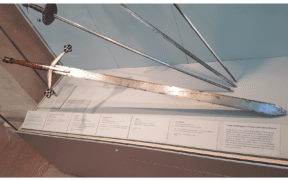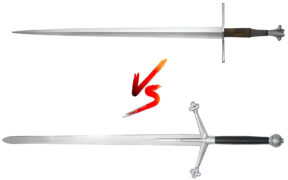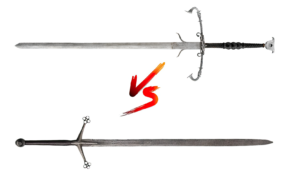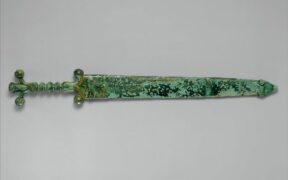The Highland Claymore’s Characteristics and Form
NO AI USED This Article has been written and edited by our team with no help of the AI
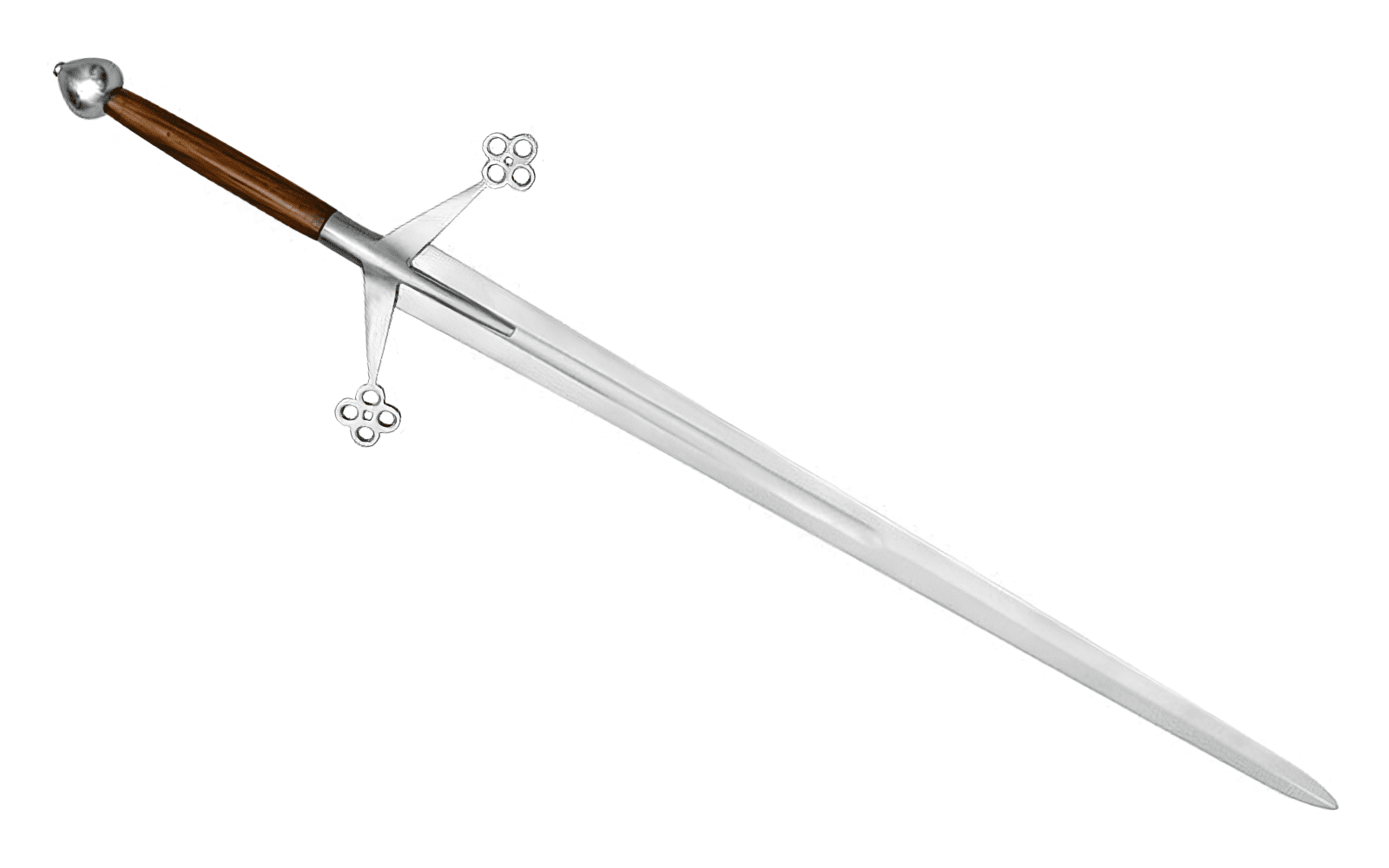
Highlanders used a range of bladed weapons for personal defense and warfare, with the Highland claymore reaching its peak in Scotland during the 16th century. The term claymore is associated with various types of Scottish swords, including the earlier Scottish two-handed sword and the later basket-hilted sword.
In this article, we will focus on the characteristics of the true claymore — the two-handed sword used by Highlanders during the era of clan warfare and border conflicts with England.
How Much Did Historical Highland Claymores Really Weigh?
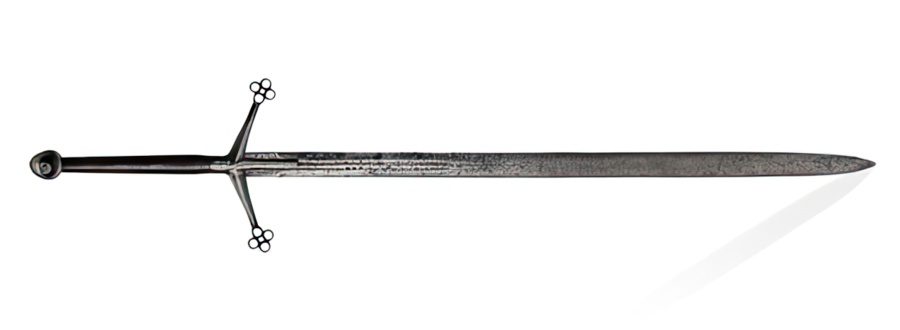
There’s a misconception that two-handed swords are extremely heavy and difficult to handle. However, these swords are not as heavy as they appear. In reality, a sword’s weight cannot be judged based on its size or blade alone. “Hilt style and blade cross-section are determining factors in a weapon’s mass,” says John Clements of the Association for Renaissance Martial Arts when discussing two-handed greatswords.
More than that, the Highland claymore is smaller and lighter than other European two-handed swords. Historical examples of the Highland claymore in museums have an average weight of 5 pounds, an overall length of 55 inches, a blade length of over 40 inches, and a grip of about 13 inches.
In general, two-handed swords required both hands to wield and generally weighed between 8 to 10 pounds. The length of their crossguard also helped in distributing the weight evenly. “With blades of up to 45 inches or more, the hilts had to be at least 9 inches to counterbalance such a long blade,” says William J. McPeak in his discussion on two-handed swords.
Defining Features of the Highland Claymore
The Highland claymore had reached its full development by the mid-16th century. While historical claymores were generally similar, there were minor differences in their manufacture, likely reflecting regional variations in style and methods of construction.
Blade Quality and Source

The blades of the Highland claymore, along with other Scottish two-handers, were broad and double-edged, suited for both thrusting and cutting. Due to the inability of Scottish smiths to meet the demand for sword blades in terms of quality, size, and quantity, claymores were often equipped with imported German blades sourced from prominent European blade-making centers such as Solingen and Passau.
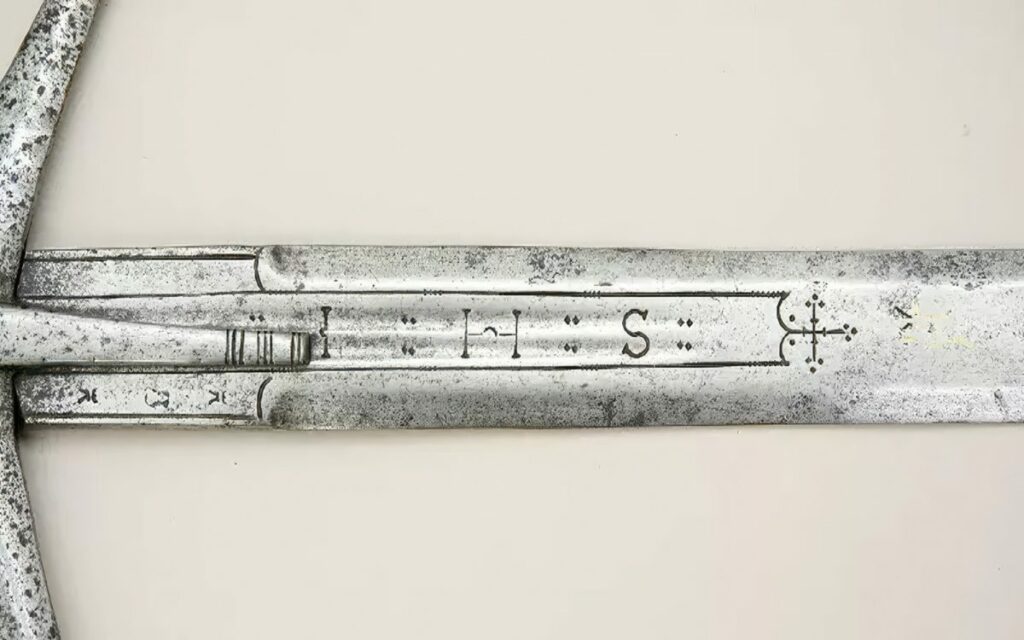
Highland claymore blades typically feature a ricasso, an unsharpened section of the blade in front of the quillons. The ricasso on two-handed swords is often long, sometimes referred to as a false grip, allowing the entire hand to grip and hold onto the blade for added leverage.
Hilt Design and Construction

The Highland claymore is most recognized for its quillons, the crossguard arms that angle towards the blade and end in quatrefoils. It also features langets, strips of metal that extend down both sides of the blade. It typically has a wheel-shaped pommel and a long wooden grip. Historical claymores had grips made from a single piece of wood, bored through to accommodate the tang of the blade, and covered with leather.
Regional Variations in Style and Methods of Construction
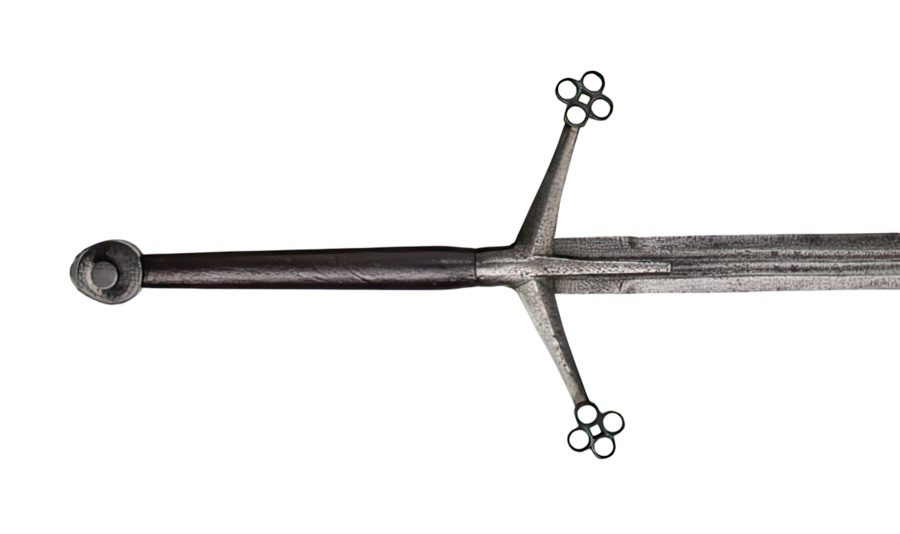
Many surviving Highland claymores still have their original hilts, which showcase exceptional craftsmanship and quality. Quatrefoil terminals are sometimes made by brazing together four small tubes. Other variations are forged from a single piece of iron, with four additional circles shaped around a central piercing.
The Black Book of Taymouth also mentions inventories of some of the Campbell Chiefs of Breadalbane, illustrating the antiquities of the Central Highlands. It notes a “tua handit sword gilt with gold”, likely a prestigious piece used by Breadalbane himself.
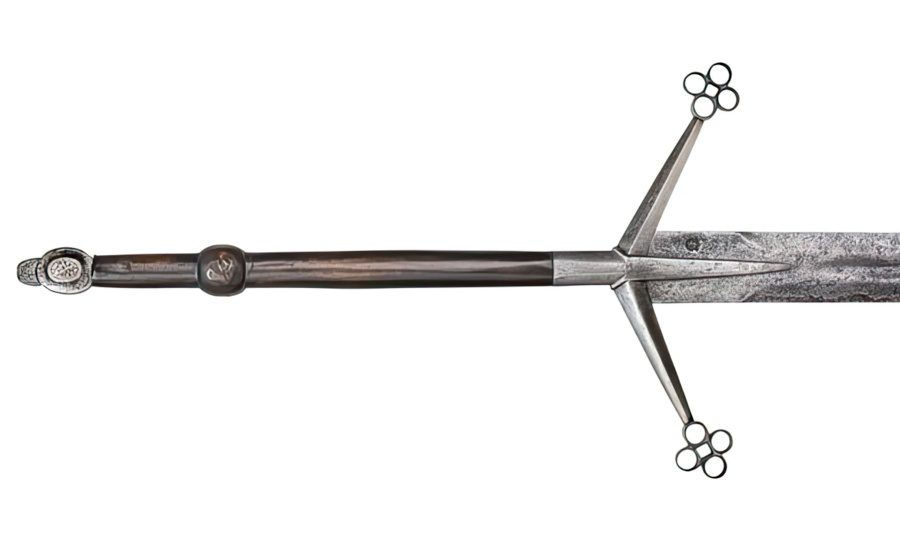
Some Highland claymore grips have swelling a few inches below the pommel, which forms a secondary grip to maximize the effect of swinging and chopping strokes. “The technique is similar to wielding a two-handed axe and consistent with the fighting techniques of the West Highlands,” says Tony Willis of the American Society of Arms Collectors in his bulletin discussing Scottish two-handed swords.
